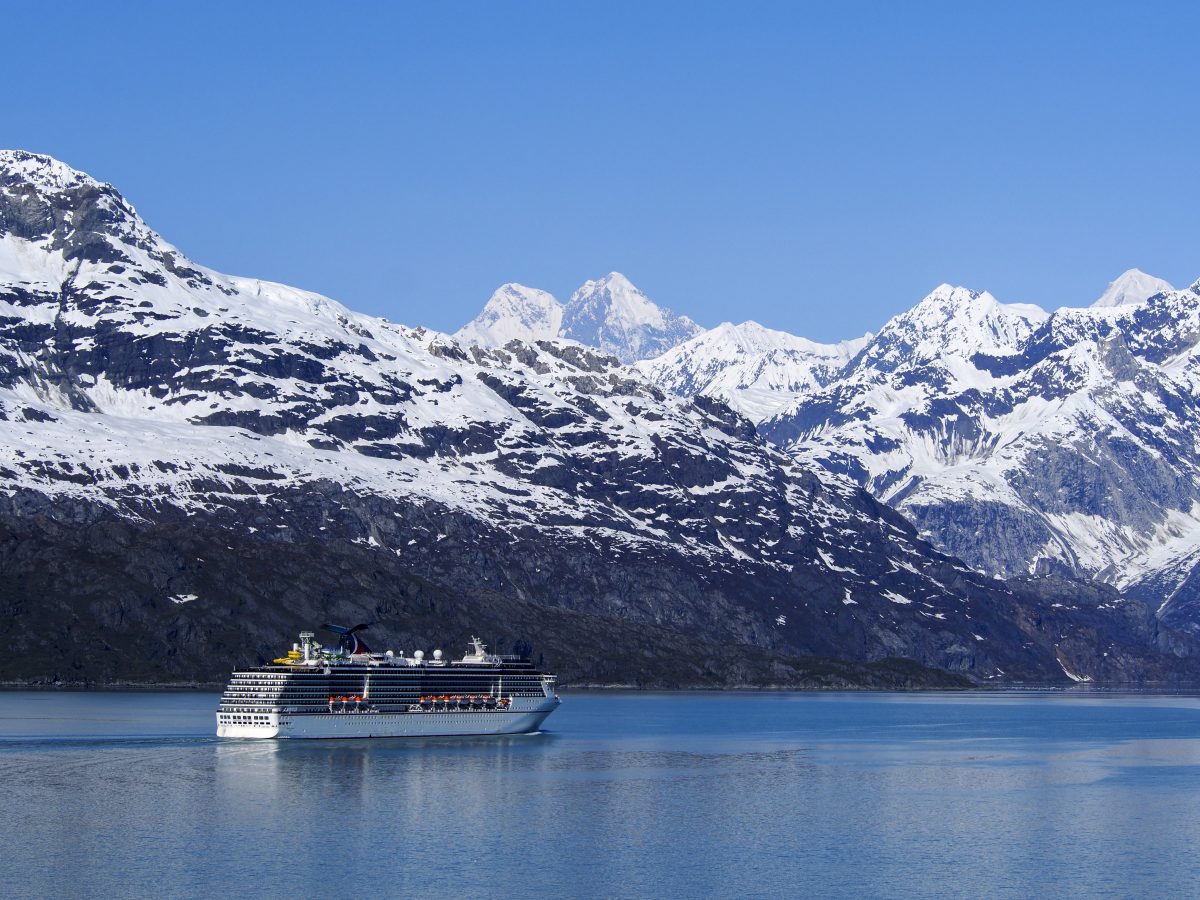For my retirement celebration 2019, I went on a cruise to Alaska with my friend Laura Zweigbaum. My parents did this when they lived in California, and I always wanted to do it after hearing about their trip.
Cruise
We set out from Vancouver, British Columbia, on the Norwegian Jewel for seven nights at sea, followed by a 4-night land excursion. The Cruise would take us north through the inside passage with stops at several ports and a day at Glacier National Park before arriving at Seward on the Kenai Peninsula 8 days later.
Inside Passage
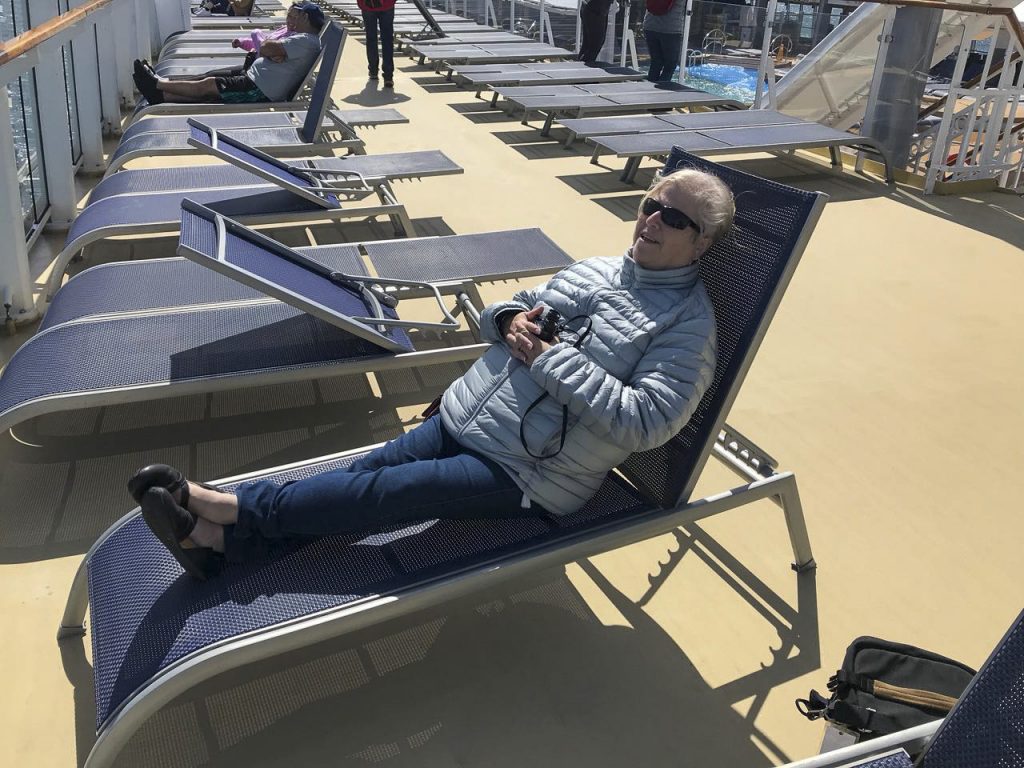
We left Vancouver late in the day – the weather was stormy and a bit on the dreary side. The next day, we sent at sea, crossing Queen Charlotte Sound before making our way into the inside passage and our first stop in Ketchikan. While overcast, it was not very rainy, and our hopes improved for better weather for our first port.
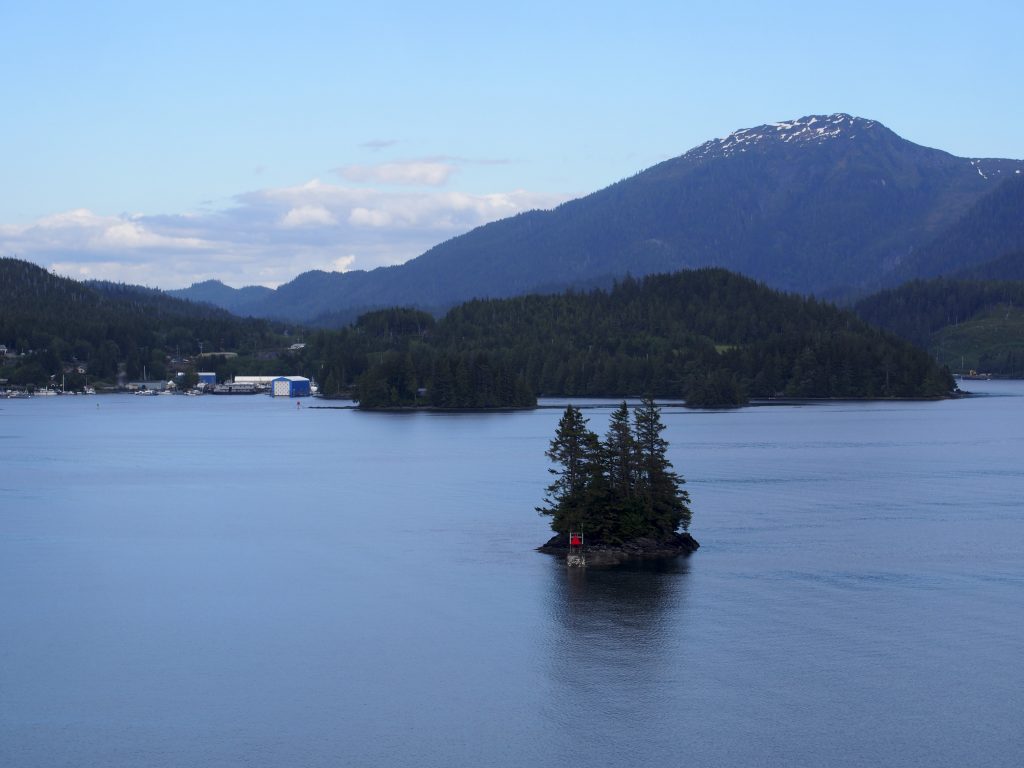
Ketchikan
Ketchikan is a harbor town on Reviillagigedo Inland – it can only be reached by air or water as there are no bridges to the mainland. The area is in a rainforest that gets over 150 inches of rain yearly, with a record of just over 200 inches. It seems they count on all this rain, and after five days with no rain, they officially declare a drought, and their water supplies start drying up!
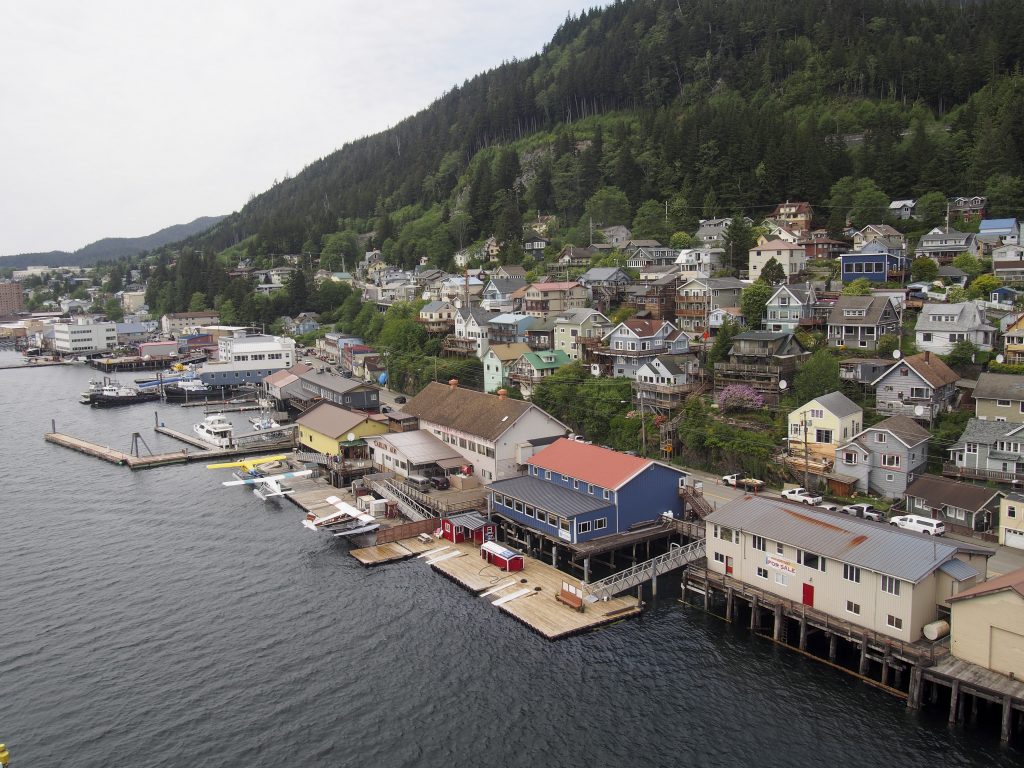
We spent time walking around downtown and had two excursions.
Saxman Village
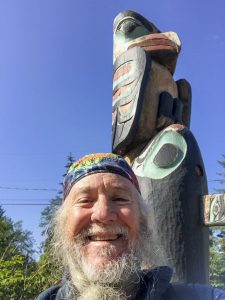
The first was a tour of nearby Saxman Village. In the late 1800s, Tlingits from the old villages of Cape Fox and Tongass searched the Saxman site as a place to build a school and a church. The site (just one square mile) was incorporated in 1929 and has a population of just over 400 today, primarily Native Alaskans.
The tour included visiting their lodge decorated with totem carvings, where the villagers performed traditional dances. We learned about their people and history, viewed and learned about the many totem poles in their collection, and observed some carvers in action.
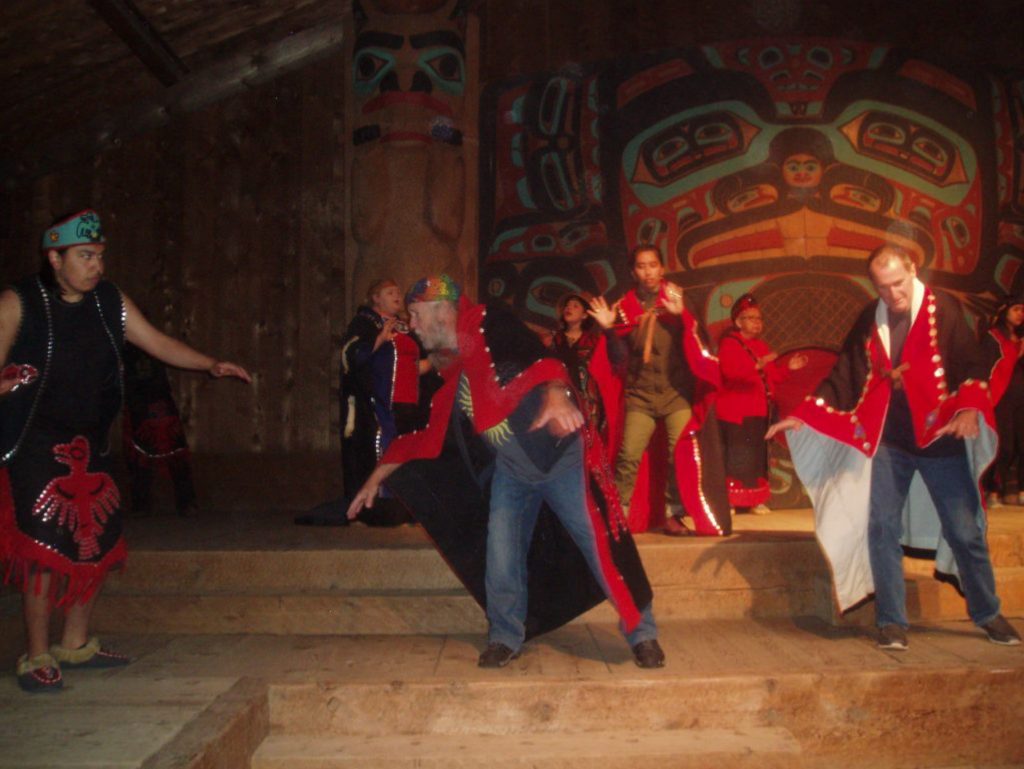
After the tour, we returned to Ketchikan and had an early lunch of Dungeness crab at Annabelle’s on Front Street. Very tasty!
Duck Boat Tour
After lunch, we returned to the dock, shopping along the way and boarding our afternoon Ketchikan Duck Boat tour excursion. The duck boat is an amphibious tour bus. We started with a town tour by land and then headed to the harbor to take the plunge! Once wet, we toured the harbor. Our capable tour guide (a school drama major) kept us entertained and informed!
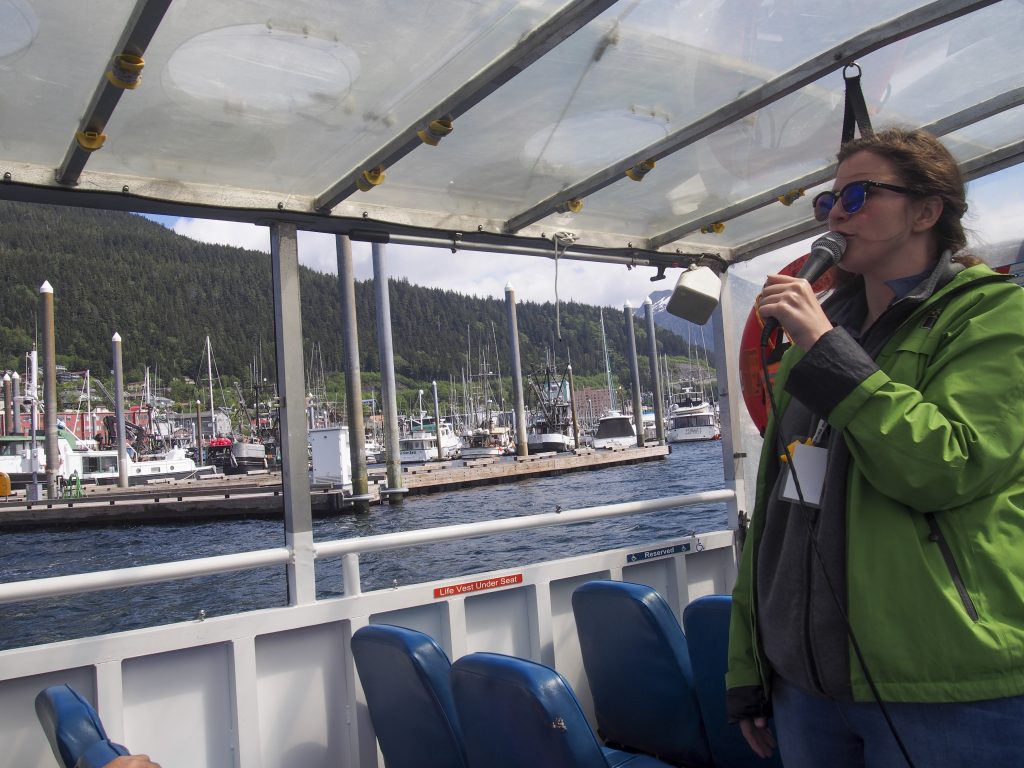
After the tour, we spent some time visiting the shops on the waterfront. Ketchikan is unique, as the first two streets closest to the water were built on piers!
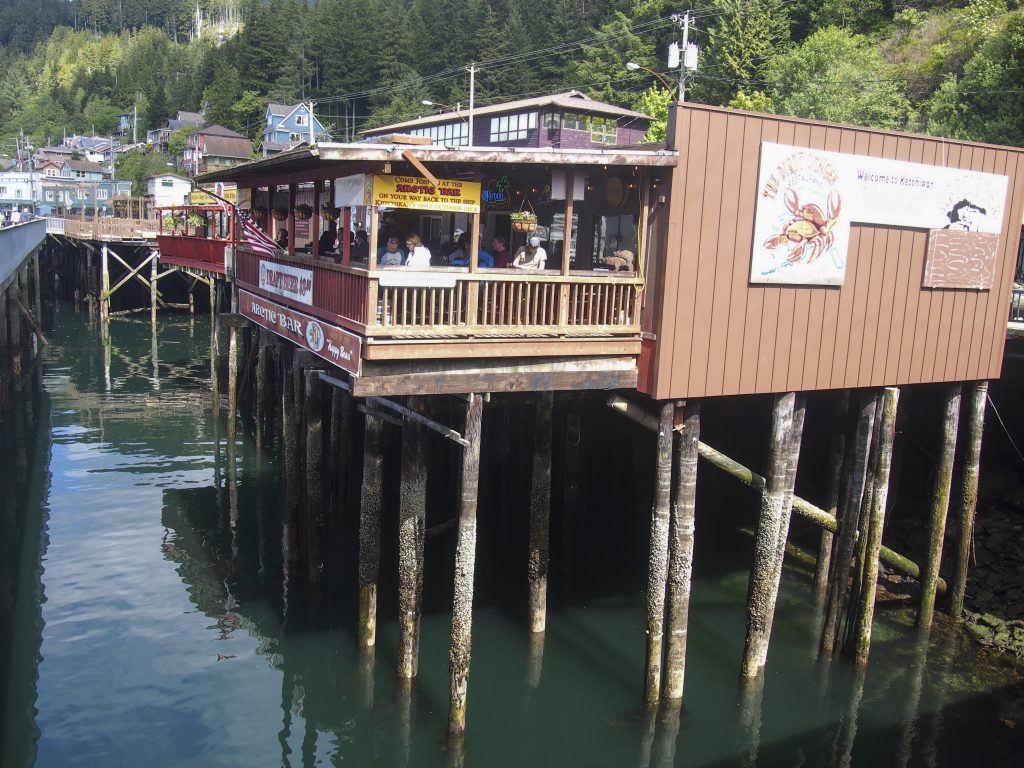
The only downside to the day was that I accidentally deleted some of the pictures from earlier. We enjoyed an ’80s disco theater presentation that evening as the ship headed north for our next stop.
Inside Passage to Juneau
The following day, we found us working our way up the inside passage to Juneau. This was the most extended passage between ports, and there were opportunities to observe some of the activity that morning before docking.
Juneau
We arrived in Juneau before lunch with moderate temperatures and dry, if not overcast, skies. Our only excursion for the day was whale watching.
Whale Watching Tour
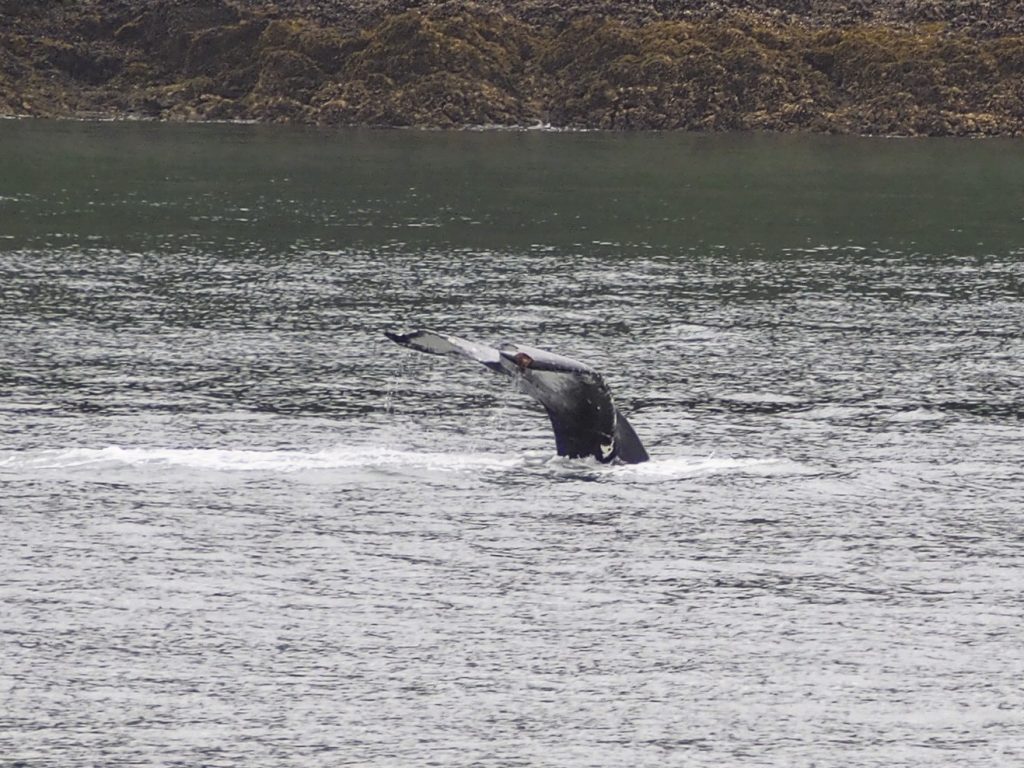
Our excursion was with Allen Marine Tours, located about 10 miles north of Auke Bay, where the ferry terminal is located. The tour was on a sizeable three-deck catamaran that allowed for good viewing. We headed out Into Stephens Passage, and it wasn’t long before we spotted humpback whales.
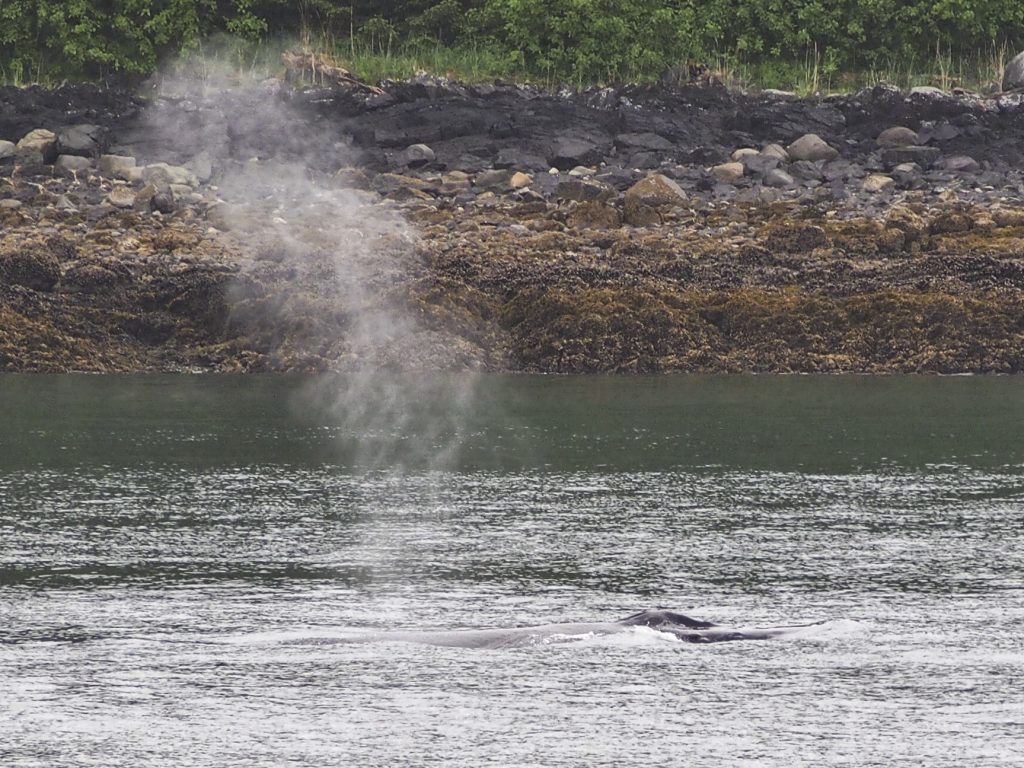
We spent several hours spotting many whales – many of them mother and calf that made the long trek from their birthing grounds near Hawaii to feed in the rich waters of Alaska in the summertime.
It is thought they give birth outside of Alaskan waters to avoid the deadly Orca whales, known to prey on newborn humpbacks. We did not see any Orcas on the trip as it was too early to spot them in the inside passage.
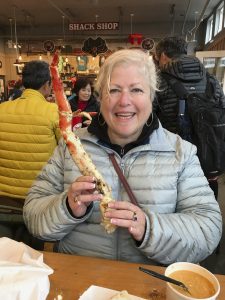
A highlight was seeing a bald eagle perched on a large navigation buoy with several Stellar sea lions. I learned the sea lion population has been severely declining in the last twenty years, perhaps due to overfishing of their primary food source, pollock. There was some excitement as a male sea lion unsuccessfully tried to get a spot on the buoy, as shown above.
After we returned from our Whale Watching excursion, we toured Juneau’s tourist area and stopped by Tracy’s King Crab Shack for a delicious king crab leg. Without a doubt, it was the best meal of the trip!
We skipped dinner on board that evening but caught a good show featuring acrobatics and exciting light shows.
Haines
The next stop on our journey was supposed to be Skagway, where we had booked two excursions. I woke up early the following day to discover we were stopped outside Skagway. We learned shortly that there was an issue with contamination of our berthing spot with spilled jet fuel. Instead, we were to dock at Haines, slightly south of Skagway. This also meant that our excursions were canceled, perhaps a more significant disappointment.

Haines was much less touristy than our previous ports of call and set in a stunning location in Chilkoot Inlet. We toured the town on foot late in the morning and spent the afternoon on the ship relaxing and enjoying the view.
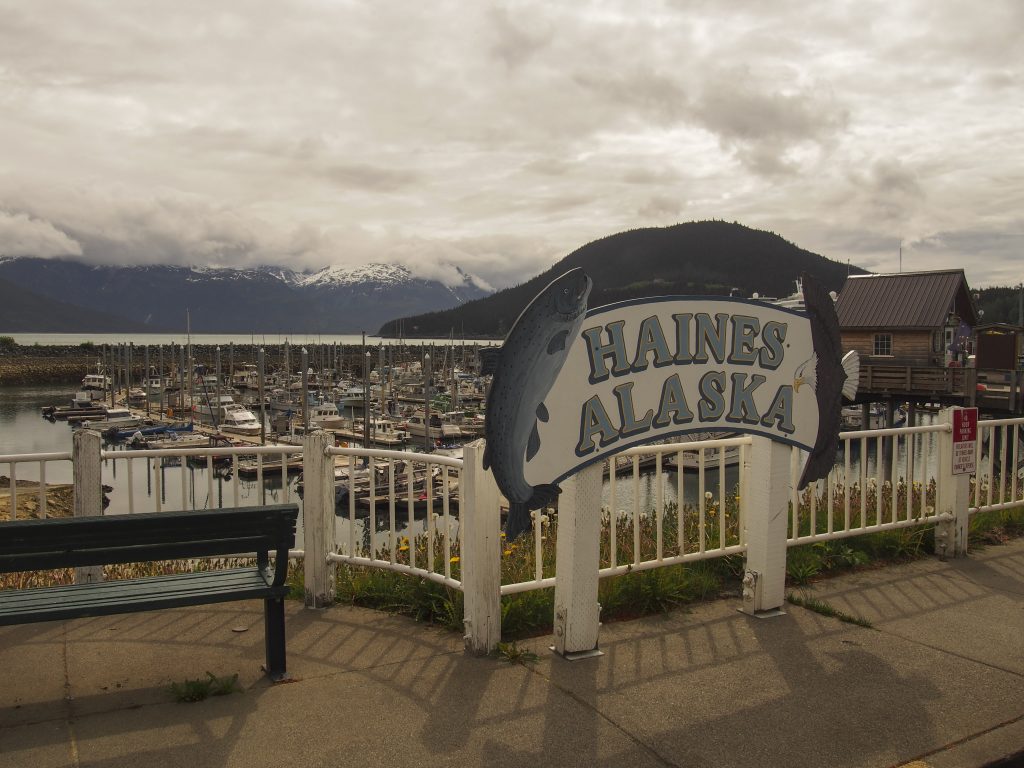
The area around present-day Haines was called Dtehshuh or “end of the trail” by the Chilkat group of Tlingit. The area became more important in the 1800s as a trading post and an army base were established in the early 1900s. After the army post was disbanded, a local group of veterans bought the barracks.
Glacier Bay
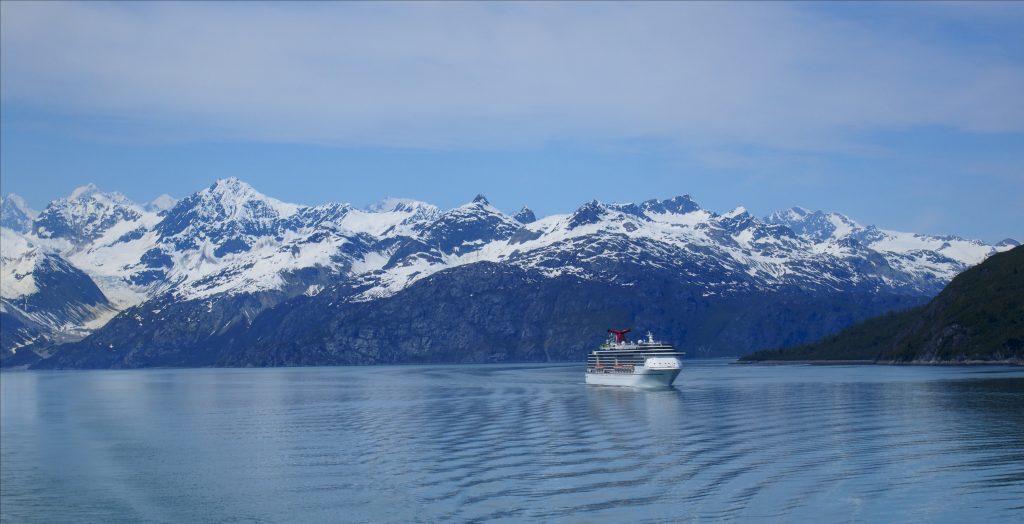
We departed late that evening and entered Glacier Bay National Park early the following day. We woke to the best weather of the trip so far – albeit a bit chilly – there was no cloud in the sky.
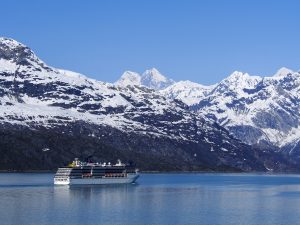
We started up Sitakaday Narrows, and as I started drinking my first cup of coffee, I happened to be looking at the right spot on the ship’s port side to see a humpback whale breach! Shortly after, a group of park rangers from the visitors center near Point Gustavus came aboard. They boarded on the move from a small tender that came alongside us as we headed north up the bay.
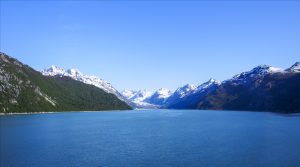
We took our time heading slowly north. The park rangers would come on the PA system and tell us more about the bay and what we saw at the different locations. I was amazed at the incredible blue skies and brilliant white-capped mountains.
Tarr Inlet
We worked our way north to Tarr Inlet. Our destination was the two tidewater glaciers at the top of the inlet. A tidewater glacier is one whose terminus encounters seawater at least at high tide, if not at all tide levels. The Grand Pacific Glacier was the wider of the two, straight to the north. The Margerie Glacier came in from the west on the ship’s left side. The two were strikingly different.
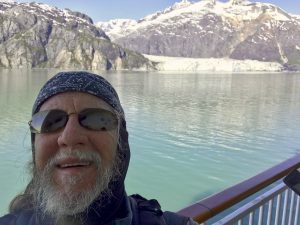
The Margerie Glacier was a brilliant blue-white. Rising 250 feet from the water with an additional 100 feet underwater, you could not see. The overall width of the glacier is about 1 mile. We watched as large chunks periodically fell off the face (glacier calving) and landed in the water below. It was hard to gauge how large the chucks were, but I would guess they were 30-50 feet high.
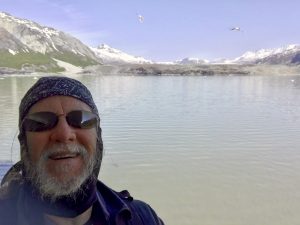
The Grand Pacific Glacier, by contrast, was as dark as the mountains’ soil. This is from landslides and other geological activities that have occurred over time. It is about 2 miles wide at the terminus, averaging about 150 feet high at the ice face and up to 60 feet deep at the waterline.
Cruising Glacier Bay
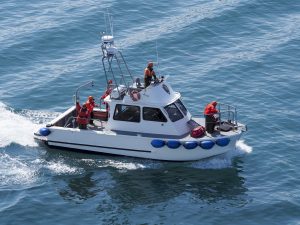
The weather was fantastic the whole time we cruised up and back throughout the morning and into the afternoon. It was so calm, and the sky was brilliant blue without a trace of haze. I got fantastic mirror reflection shots and magnificent panoramas. As we approached the park entrance, the rangers’ boat appeared to gather their crew and head home for the day.
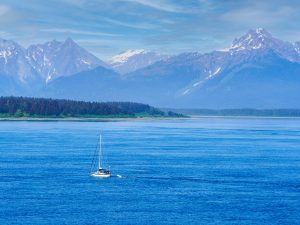
We saw marine life throughout the trip – Steller Sea lions, otters, and many different species of birds. It was cool, but as the morning progressed, it warmed up nicely. A day to always remember!
We spent the rest of the day going through the Icy Striating and Cross Sound to emerge back in the Pacific Ocean in the Gulf of Alaska.
Yakutat Bay and Hubbard Glacier
We arrived in Yakutat Bay early the following day. About 150 miles up the coast from the exit of the interior passage, it lies in the Gulf of Alaska. It is home to the largest tidewater glacier in North America – the Hubbard Glacier.

As we entered the bay, we saw ice floating in the water. As we get closer to the glacier, the scene becomes surreal – it is hard to tell the water is water and what is ice. Again, the sheer size of everything makes it hard to appreciate how big it is.
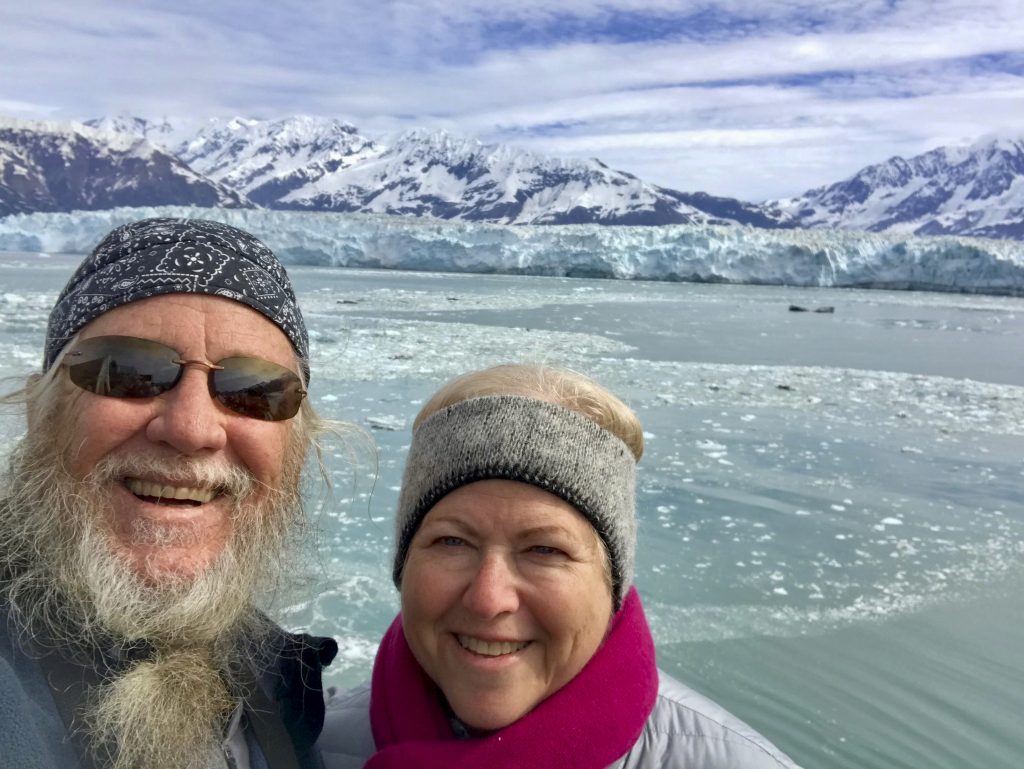
It is 76 miles long,7 miles wide, and 600 feet tall at its terminal face (350 feet exposed above the waterline and 250 feet below the waterline). Ships are warned to stay a safe distance as the ice calves blocks of ice the size of skyscrapers. Since much of it is underwater, they can cause serious action when moving.
We spent the morning observing the glacier and slowly returned to the Gulf of Alaska to cross to Seward. By afternoon, it was very overcast and rainy. Later in the afternoon, we encountered a relatively large swell – enough to cause the boat to shift and rock a bit. I kept looking for wildlife and saw some whales, dolphins, and other marine animals, including birds.
That evening was the finale from our acrobatic singers and dancers, followed by an appearance from many of the crew, including the captain.
Overland
Kenai Peninsula and Denali
I awoke the following day to find us docked in Seward. This would be the end of the cruise and the start of our land tour to Denali, with several stops along the way.
Seward
After loading up our coach, we drove a short distance to the town of Seward. Seward is an ice-free harbor and plays an essential role in the distribution of goods throughout Alaska. The original dog sled runs of mail and goods in the Winter months originated from Seward to points north on what is known as the Iditarod Trail.
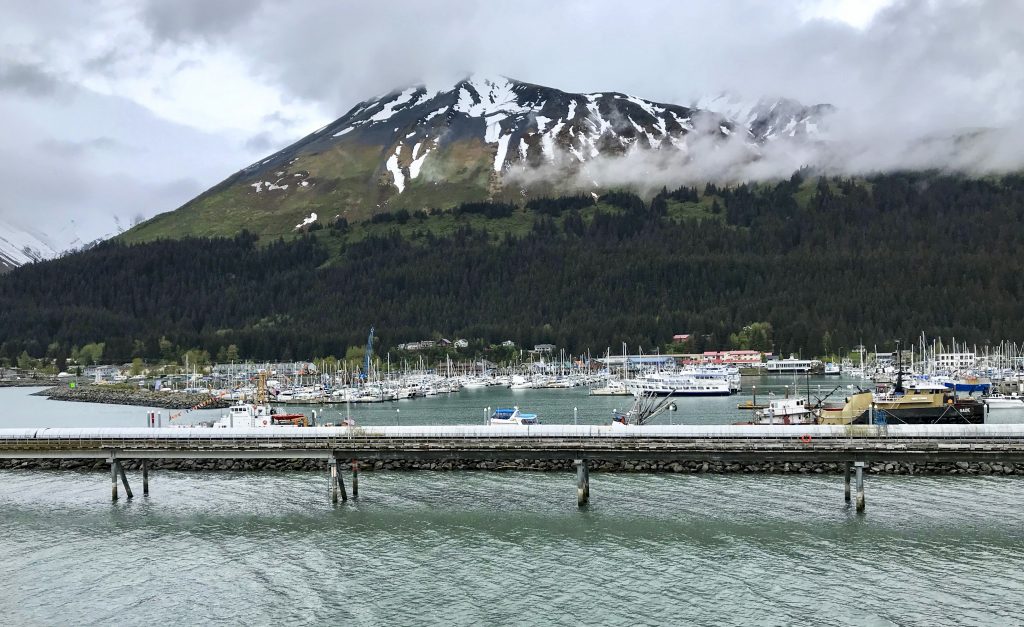
Alaska Sealife Center
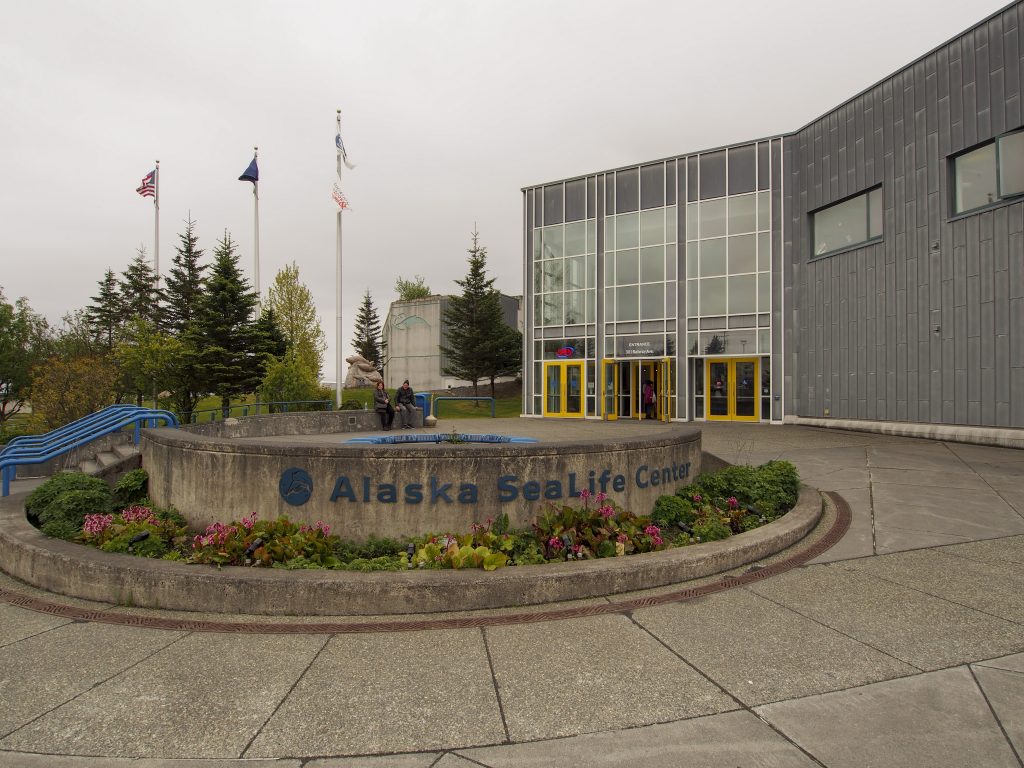
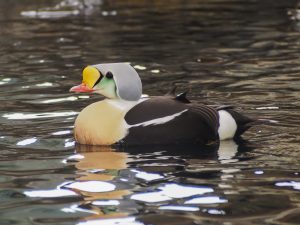
We visited the Alaska SeaLife Center with the time we had in Seward. We used many exhibits and areas to study and observe marine life, including Steller Sea lions, otters, marine birds, and fish of all kinds. While primarily dedicated to marine research and education, the Center is the state’s only permanent marine mammal rescue and rehabilitation facility.
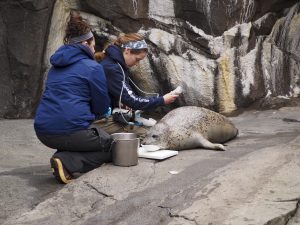
We observed as several researchers carefully measured the fat content of Steller Sea lions. The sea lions seem very happy to lie there and have the measurements made as long as a steady supply of fish nuggets is ready from the pail in the foreground!
It was back in the bus around lunchtime and time to head north to our first overnight stop in Girdwood. We got to know our tour director, Lisa, and driver, Mike, a bit more. Lisa told us many stories about the areas we drove through and life in Alaska. She talked a lot about her personal experiences as a long-term resident, which was a nice touch.
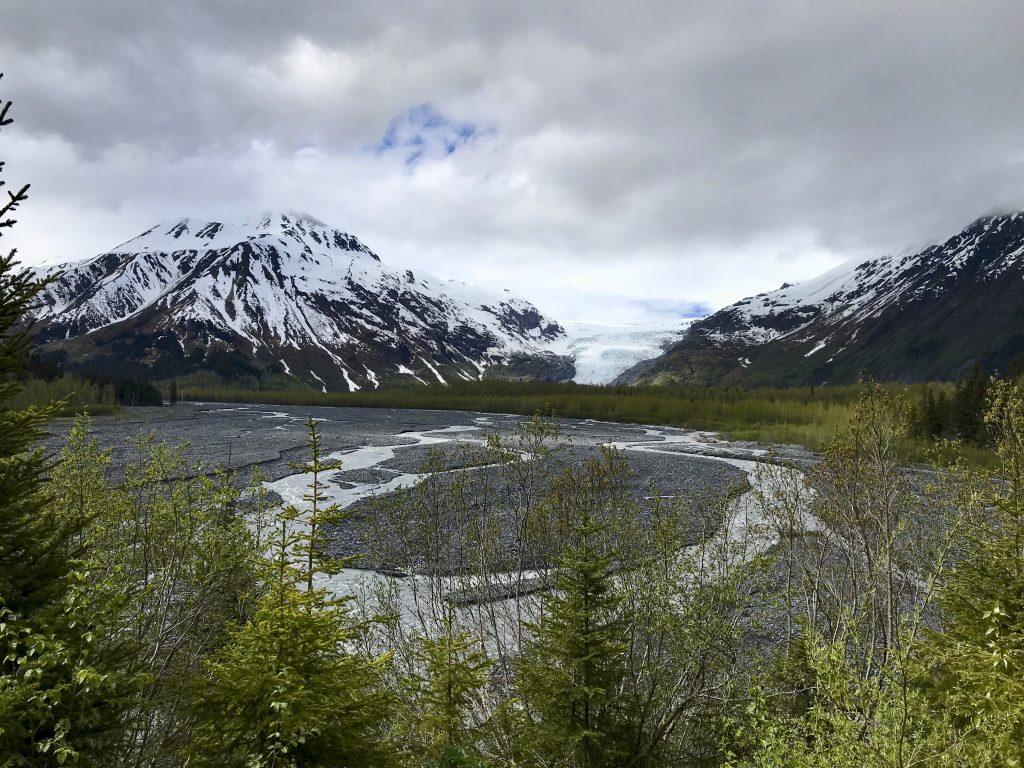
Alaska Wildlife Conservation Center
We stopped here in the afternoon after several hours of driving. The center is at the end of Turnagain Arm – a long tidal basin south of Anchorage. The Alaska Wildlife Conservation Center is a sanctuary dedicated to preserving Alaska’s wildlife through conservation, research, education, and quality animal care. AWCC takes in injured and orphaned animals.
Alyeska Resort
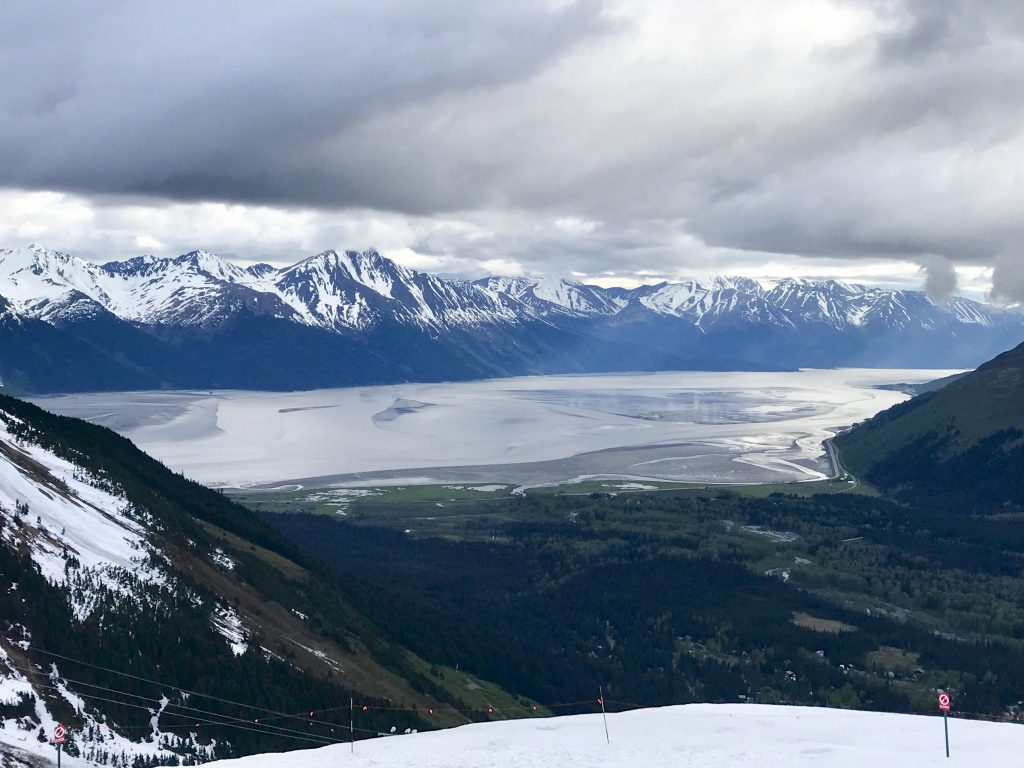
We stopped that evening at the Alyeska Ski Resort in the town of Girdwood, southeast of Anchorage, for the evening. This is a beautiful resort with the most excellent accommodations of any stop on the trip. We headed to town for dinner before heading back up the tram to the top of the mountain.
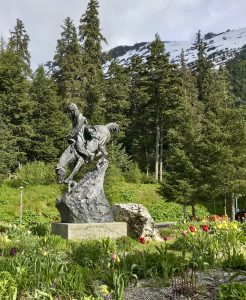
The view shows the tidal basin that runs south of Anchorage called Turnaround Arm. This area got its name in the elusive search for the Northwest Passage. Periodically a tidal bore wave appears when conditions are right and surfers flock to ride the never-ending wave.
I finally got a good hot tub soak at the ski resort! After a good night’s sleep and a leisurely breakfast, we loaded up again the following day for the final leg to Denali.
In Anchorage, we went through Lake Hood Seaplane base – home to over 700 seaplanes that are important for getting around in Alaska. From there, we headed to the town of Wasilla to get some lunch and then made our first stop to see an Iditarod dog kennel.
Happy Trails Kennels
Four-time Iditarod Champion Martin Buser owns and has operated this kennel since 1982. As I learned over the time we spent on our land tour – the Iditarod is a very big deal in Alaska and is taken very seriously. Martin was no exception, and his enthusiasm for the sport – mainly the dogs – was touching for this dog lover!
We met the dogs and watched Martin exercise them using an ATV. And no – the dogs are not pulling the ATV! They use this technique and open runs to exercise the dogs when snow is not on the ground. It was noted that the dogs need at least 2 hours of strenuous exercise during the summer months to stay in shape.
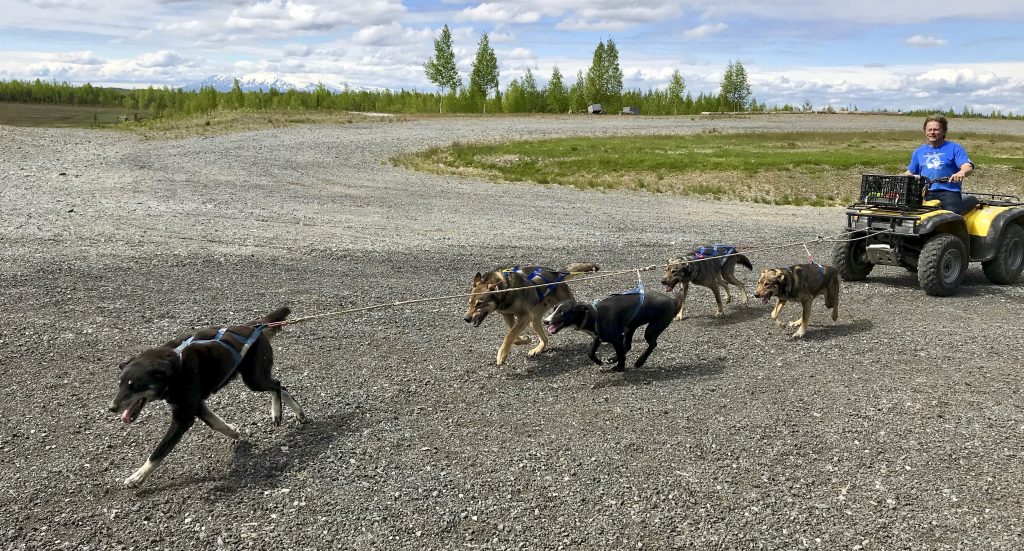
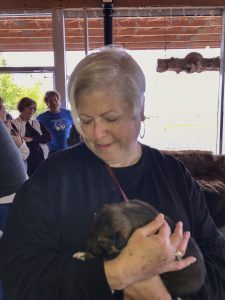
At the end of the tour, they brought in a litter of puppies only a few weeks old. Their eyes had just opened, and they were still getting used to being alive, much less manhandled by many tourists. But this, too, is good for the dogs to get them used to being handled and around people. I was taken by how friendly and loving these dogs were. It was no surprise, however, when you saw how devoted these handlers were to their dogs and the stories of how much they sacrificed to do what they so passionately cared about.
At the end, our tour guide, Lisa, got a picture of the group.
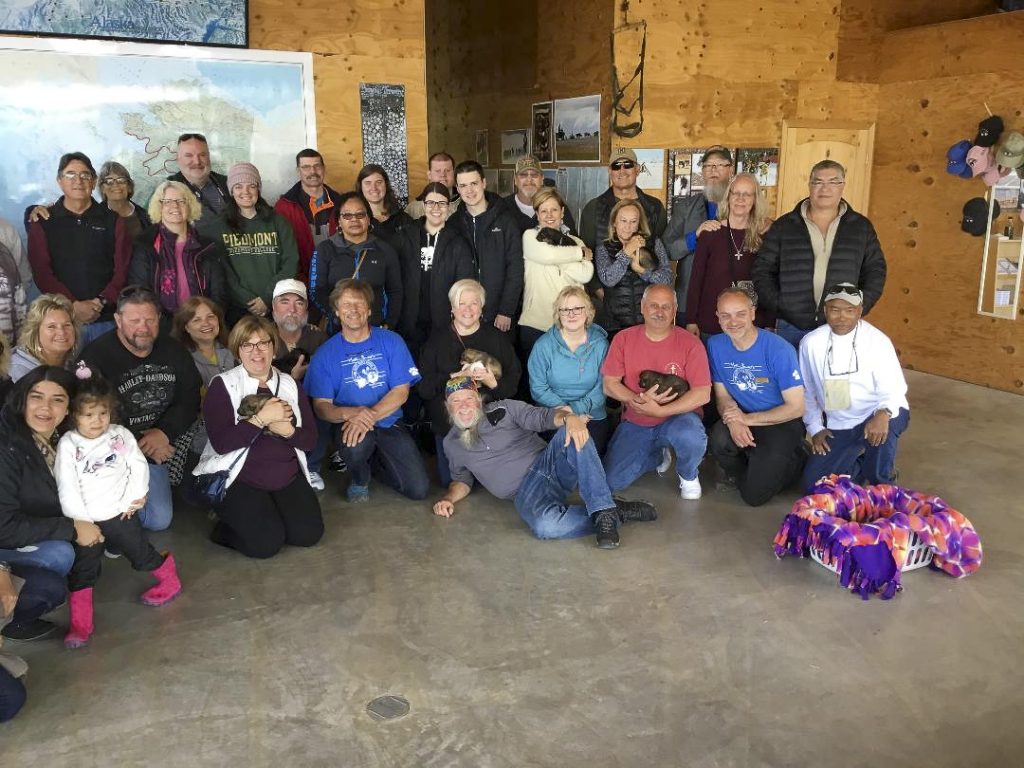
After that, we loaded back up and headed north to our lodge for the next two nights. We stayed at the Denali Village Lodge near the park entrance. It was a nice resort with a picturesque main lodge, costly dining (like everywhere else), and many places to rid yourself of cumbersome cash.
Even though it was around dinner time, we still had about 6 hours of daylight left. Time for our next excursion!
Yanert Glacier by Helicopter
It was noted that we did not get to do our planned excursion in Skagway. So we opted instead to take a helicopter ride to a nearby glacier! The plan was to ride for about 25 minutes and land on the immense Yanert Glacier just east of Denali National Park.
After putting some glacier boots on, we loaded up with our pilot and another passenger and headed easterly to the mountain range that held the glacier. The ride initially was over wooded areas before accessing the more monitions areas. We eventually landed and surveyed the alien landscape.
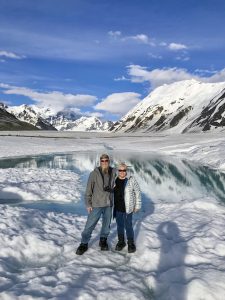
We saw some wildlife on the ride, including Caribou and Dall sheep. We saw a beaver damn creating a high-altitude lake. Eventually, the terrain changed, and we were in the heart of the mountain range. The views were breathtaking. Eventually, we landed on the ice near a blue-white pool of water and got out for a look around.
The landscape reminded me of something I would have seen in a science fiction movie. Rivers of water carve channels in the ice only to plunge into a hole not to be seen again. Bridges of ice are prone to collapse if you walk on them. What an incredible experience it was.

After 15 minutes or so, we got back in for the Long ride down the glacier. At one point, there was no more ice and just a large flat river bed with meandering streams now that the main snowmelt was over.
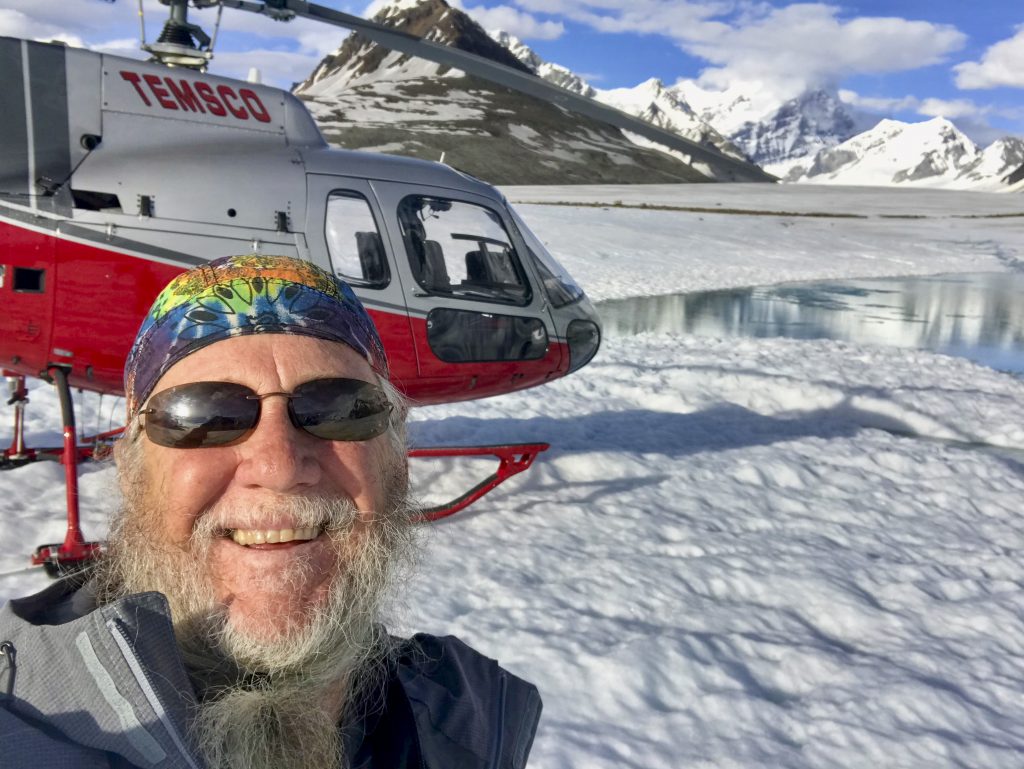
The whole trip was ever in the blink of an eye, but the memories will hopefully remain longer. We returned to the lodge around 9:30 PM for a late dinner.
Denali National Park Tour
The following day was an early one. We met at the lodge and packed onto a modified school bus for a 53-mile trek into the park. We picked up other passengers at another resort and headed into the park. Our guide was also our bus driver and seemed to have a head full of knowledge about the park. He urged us to look for wildlife and call it out so we could stop and observe. He had a camera hooked up to TV monitors in the bus – a recreation of the days when the guide would set up spotting scopes to let their passengers get a good look. And yes – you could buy a copy of the video feed!
We had the opportunity to see the mountain at several points along the route.
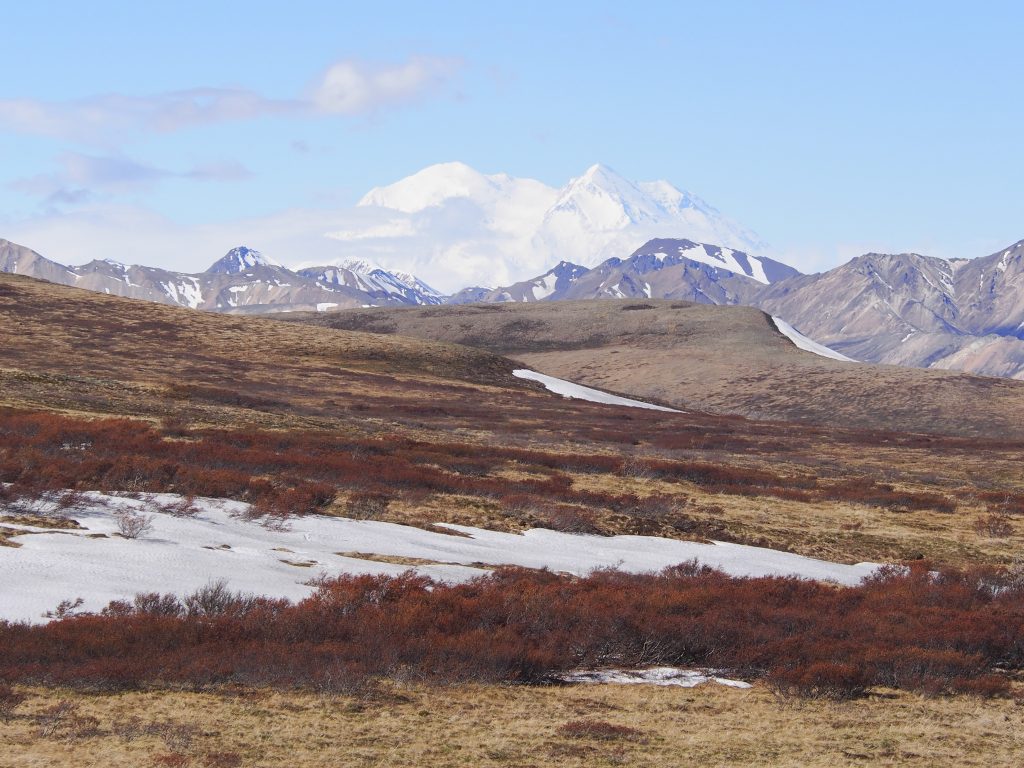
Denali means ‘the great one’ in the local tongue. For many years, the mountain was called Mt McKinley after our 25th president, William McKinley. This was a gesture at the time to get his support for the area; he never once even visited Alaska. Eventually, the park was named Denali, and then, as soon as 2015, the name was finally changed officially back to Denali (over the objections of McKinley’s home state of Ohio).
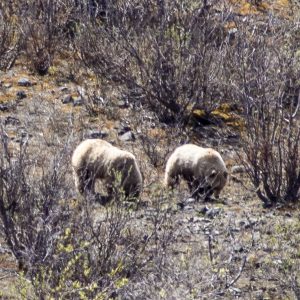
We got our money’s worth and more with. a double helping of great weather (just like in Glacier Bay) and wildlife. Before we were barely in the park, we saw a cow Moose with a 2-week-old calf foraging around the building areas. Along the way, we saw many Dall sheep, several groups of Caribou, and, in the end, two Snow White Grizzly Bears foraging the dried river banks for their favorite foods after a long winter’s hibernation.
The ride took us over some spectacular scenery. At one point, named Polychrome trail, the road became steep with sheer rocky sides. Several passengers had an obvious problem but were troopers and hung on tight. We made several stops to get photo ops and a chance to stretch our legs and look around. Even the box lunch we got was pretty good!
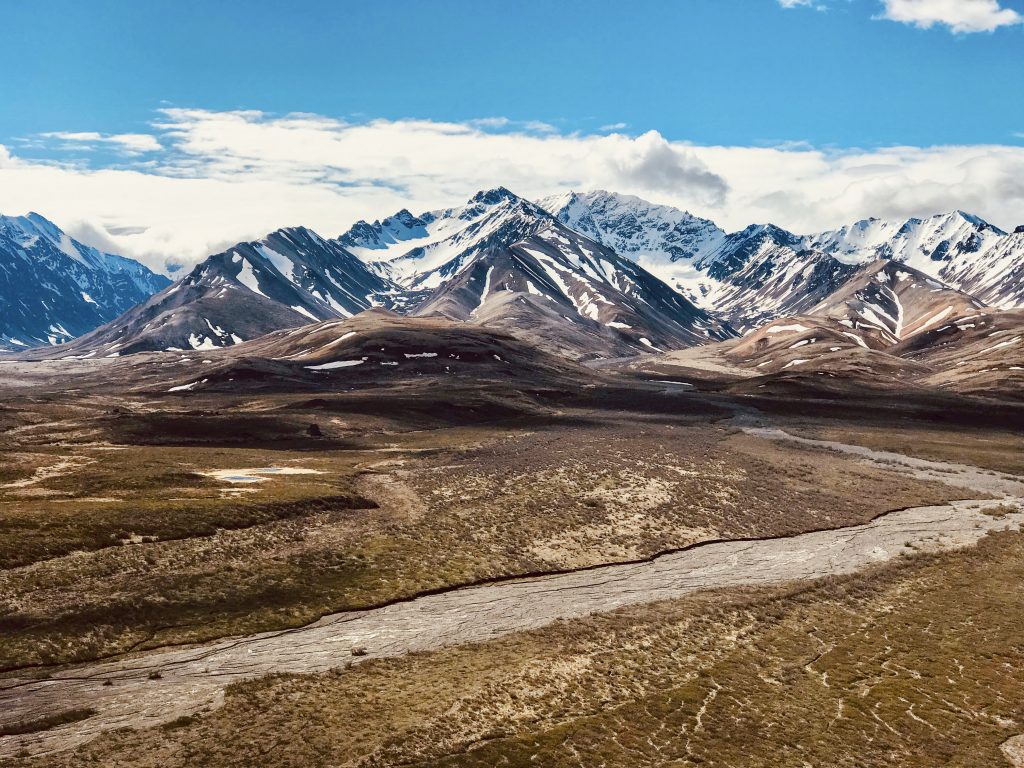
We finally reached our goal at mile 53 – the Tolkat River and visitor’s center. At this point, we starched our legs, piled back in, and went the same way out! As we neared a river we had passed earlier, we got reports of a sighting of two Grizzly bears nesting in one of the ranger’s cabins. Of the big five (Moose, Caribou, Bear, Sheep, and Wolves), we scored 4 out of 5!
We got back to the lodge late in the afternoon. That evening, we took in the ‘Cabin Evening’ – a dinner served by singing waiters who told the stories of the early days in Alaska. All had fun. That evening, I woke up around 1 PM and confirmed it eventually got dark outside. My next check at 4:30 AM showed it to be mid-morning already! Wild.
Train Ride South
We had a late start the next day and boarded the train around 12:30 PM for the 4-hour trip to Talkeetna. We boarded at the Denali Park Headquarters, and our tour bus followed us to pick us up at our destination.
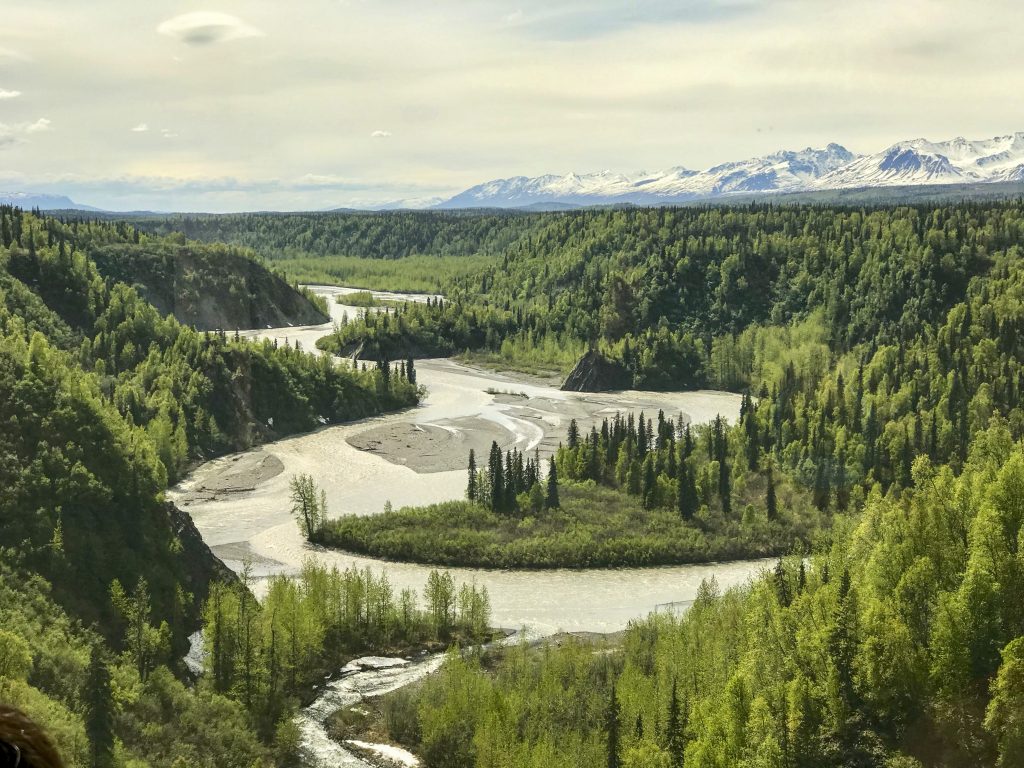
We had lunch on the way down – very nice and super nice scenery as we ate. Before long, we had arrived at our destination and got back on the bus for a several-hour ride to Anchorage. We were headed for the Hilton for several hours of rest before heading to the airport to catch the red-eye back home.
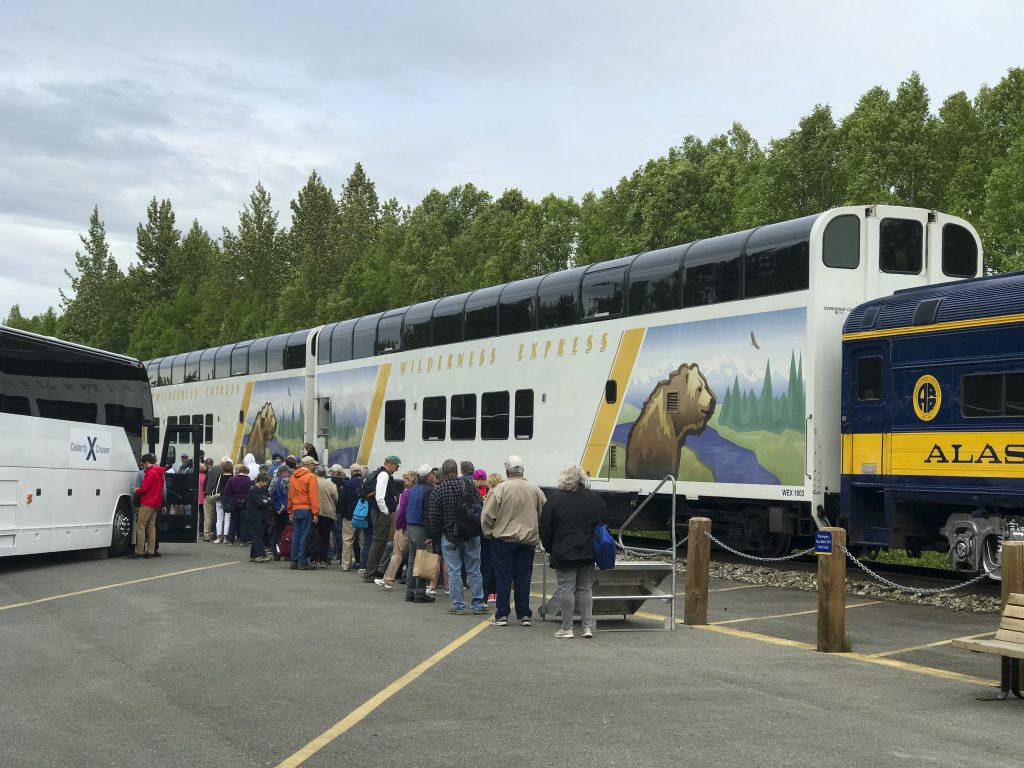
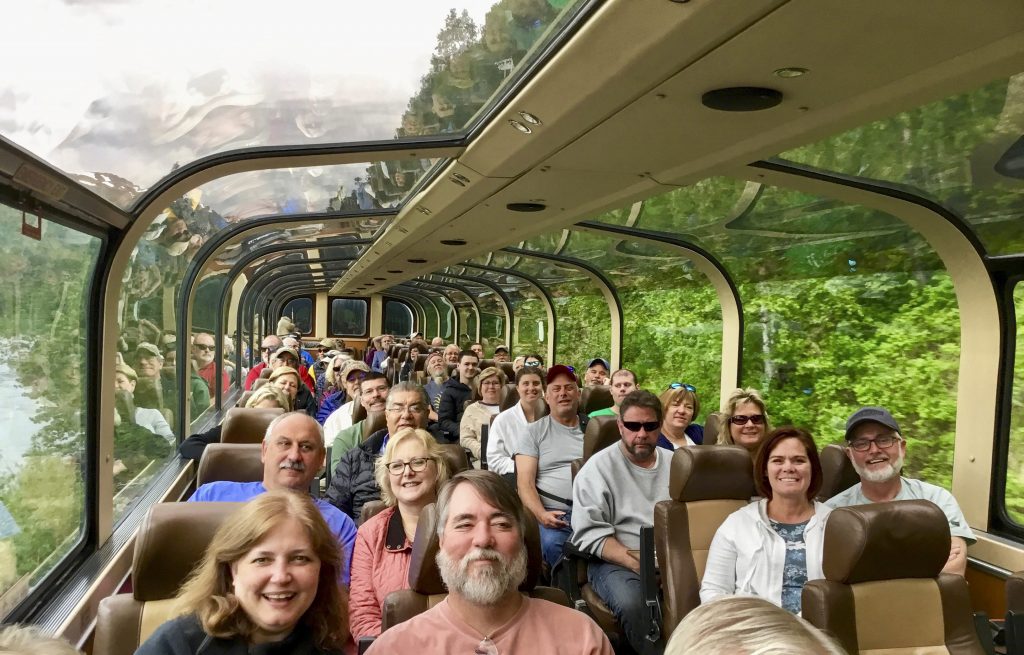
Back to Anchorage and then red-eye back home through Seattle. It was a most excellent trip!


